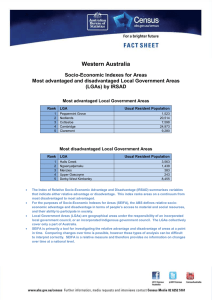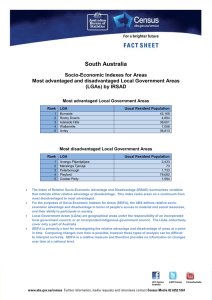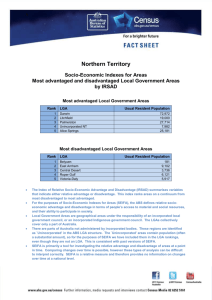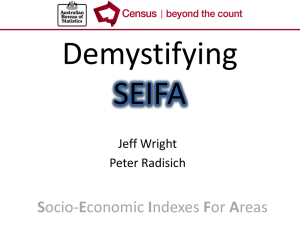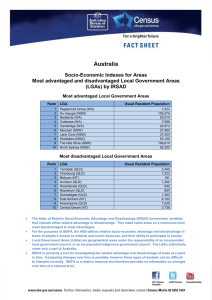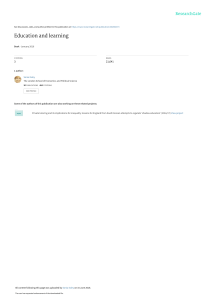Australian Capital Territory Capital City - Canberra
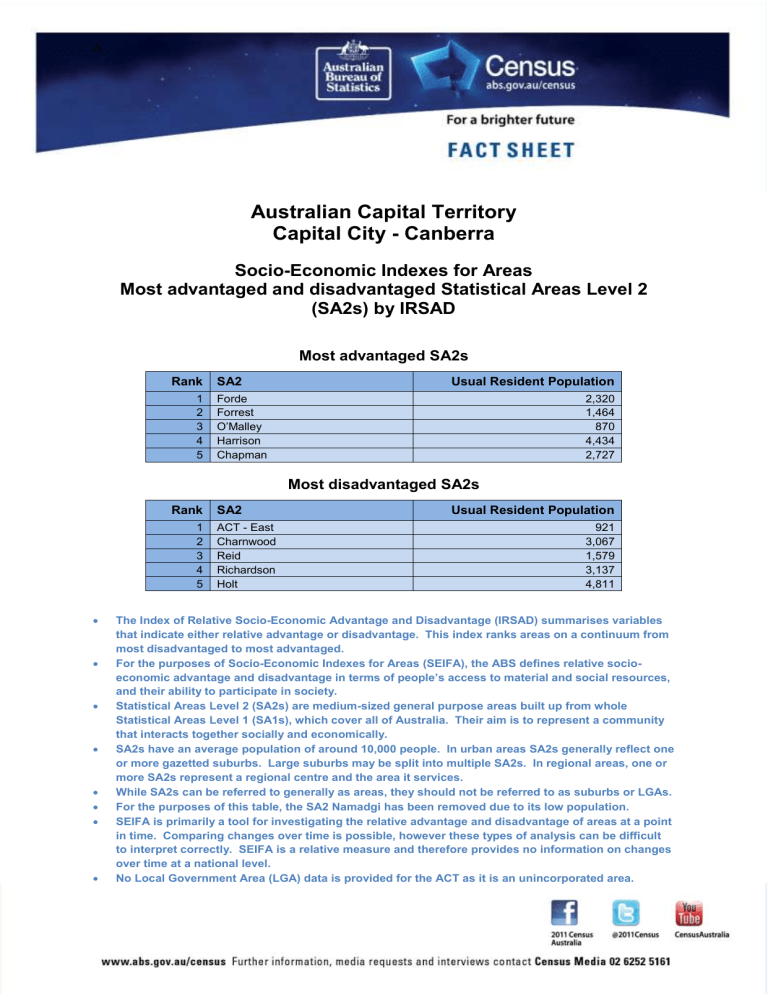
A
Australian Capital Territory
Capital City - Canberra
Socio-Economic Indexes for Areas
Most advantaged and disadvantaged Statistical Areas Level 2
(SA2s) by IRSAD
Rank SA2
1 Forde
2 Forrest
3 O’Malley
4 Harrison
5 Chapman
Most advantaged SA2s
Usual Resident Population
2,320
1,464
870
4,434
2,727
Most disadvantaged SA2s
Rank SA2
1 ACT - East
2 Charnwood
3 Reid
4 Richardson
5 Holt
Usual Resident Population
921
3,067
1,579
3,137
4,811
The Index of Relative Socio-Economic Advantage and Disadvantage (IRSAD) summarises variables that indicate either relative advantage or disadvantage. This index ranks areas on a continuum from most disadvantaged to most advantaged.
For the purposes of Socio-Economic Indexes for Areas (SEIFA), the ABS defines relative socioeconomic advantage and disadvantage in terms of people’s access to material and social resources, and their ability to participate in society.
Statistical Areas Level 2 (SA2s) are medium-sized general purpose areas built up from whole
Statistical Areas Level 1 (SA1s), which cover all of Australia. Their aim is to represent a community that interacts together socially and economically.
SA2s have an average population of around 10,000 people. In urban areas SA2s generally reflect one or more gazetted suburbs. Large suburbs may be split into multiple SA2s. In regional areas, one or more SA2s represent a regional centre and the area it services.
While SA2s can be referred to generally as areas, they should not be referred to as suburbs or LGAs.
For the purposes of this table, the SA2 Namadgi has been removed due to its low population.
SEIFA is primarily a tool for investigating the relative advantage and disadvantage of areas at a point in time. Comparing changes over time is possible, however these types of analysis can be difficult to interpret correctly. SEIFA is a relative measure and therefore provides no information on changes over time at a national level.
No Local Government Area (LGA) data is provided for the ACT as it is an unincorporated area.
